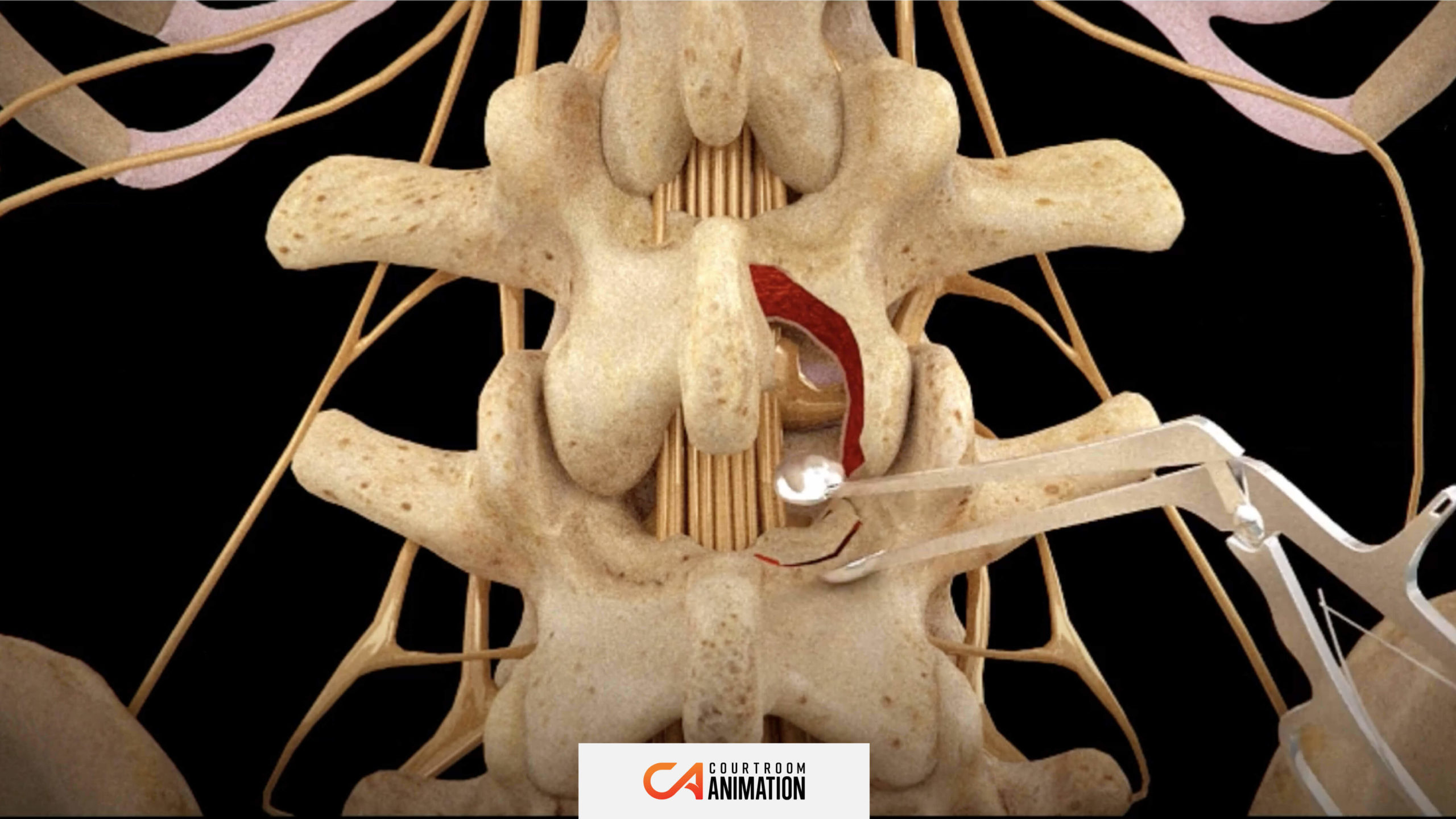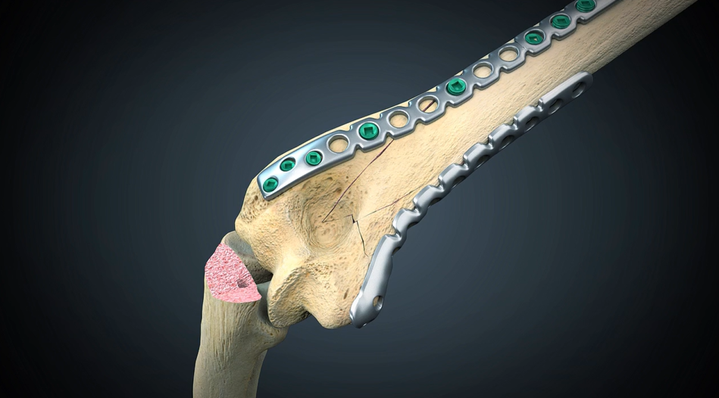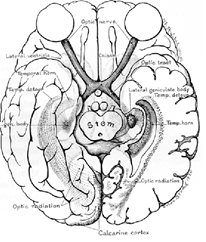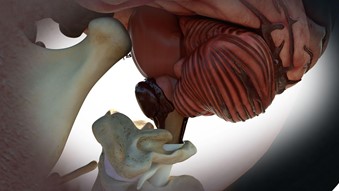
Knowledge is power. And, to attorneys specifically, knowledge about how legal exhibits are used is power. Knowledge about where they came from and how they are used can make a difference in how an attorney presents their case. For example, medical illustrations are not always simple anatomical drawings, nor are they only valuable in trial — they can be extremely impactful in any stage of litigation.
Some jurors feel that attorneys and experts can speak almost a different language in court. An animation is like an oral-to-visual translator. You say, “The defendant/plaintiff is liable for this motor vehicle collision,” and they watch the scene of how exactly the person lost control of their vehicle and caused the crash. But how long have attorneys used this supportive legal technology?
Medical visuals have actually been used since the mid-1900s, but they have evolved substantially in that time. In this article, we share some facts about legal medical illustrations that you probably didn’t know – including what type of evidence they are typically classified as, how to gain an advantage when opposing counsel uses them, and more.
Follow along as we explore these four interesting data points about medical illustrations!
1. Medical Illustrations are Demonstrative Evidence (and Are Different from Simulations!)
As medical graphics became more prevalent in civil cases, attorneys sometimes dismissed them because they did not want to risk their visual(s) marked as inadmissible. In 2014, the Southern District of New York Judge Jack B. Weinstein labeled computer-generated exhibits as “pedagogical devices,” and separated them into five demonstrative categories:
- Static Images
- Animations
- Simulations
- Computer Models
- Enhanced Images
Sample Medical Animation Labeled as Demonstrative Evidence
This allowed medical illustrations (static images) and animations to not be classified as direct case evidence, which made the admissibility process less rigorous in comparison to a simulation.
Attorneys and other legal professionals often use the terms “animation” and “simulation” interchangeably, as they are both visual aids. However, there is a difference between the two, and this can cause confusion when submitting one for approval.
A legal animation is a video accurately demonstrating an expert’s opinion, or a witness’ testimony and/or deposition. In contrast, a computer simulation involves calculations and creates new data that ultimately shapes the basis for the expert’s opinion.
In People v. Duenas (2012), the California Supreme Court drew a distinction between forensic animations and simulations:
“[Animations were used]… to illustrate an expert’s testimony while simulations contain scientific or physical principles requiring validation. Animations do not draw conclusions; they attempt to recreate a scene or process, thus they are treated like demonstrative aids.”
Tips on Presenting Medical Illustrations & Other Visuals
Beyond the issue of admissibility, there are other benefits for attorneys who at least have a foundational knowledge of medical animations and illustrations.
How attorneys present demonstrative exhibits can greatly affect the outcome of their case. And, in civil trials, images of motor accidents, products, or injuries are becoming increasingly common, and have multiple angles from which they can be presented in court.

To maximize the chances of a successful settlement or verdict, keep these tips in mind:
- Confirm the judge or jury can clearly see your illustration from where you present it.
- Create a narrative around the medical graphic before it’s revealed.
- Present your medical animation to the opposing counsel before mediation discussions and the trial date.
2. Medical Graphics Have Been Used Since The 1970s
Widespread use of 2D and 3D demonstrative evidence in United States courts did not begin until the mid to late 1900s. While the phrase “medical animation” appears in academic texts as early as the 1930s, computer-generated graphics were not advanced enough to actually create one.
In 1975, the journal Science described the use of computer graphics for medical purposes. One decade later, the first use of legal animation as a demonstrative visual occurred when Delta flight 191 crashed.
In 2006, the American Bar Association found that “…25% of firms with 50 to 99 attorneys used [legal] technology in 2007, vs. 4%.” While that was several years ago, the use of computer animation in the legal industry has only grown as more and more attorneys expand their skill sets.
As they became commonplace, medical animations and other legal graphics had a profound impact on expert testimony and depositions. The images could capture the jury’s attention and walk them through complex topics, and they had a better chance of remembering them later on.
2D vs. 3D animation:
The difference between 2D and 3D animation is that 2D animation was usually hand drawn, while modern 3D animation uses computer animation software to create realistic and accurate visuals.


Left: 2D Medical Illustration by Max Brödel, 1919
Right: 3D Medical Legal Graphic from Courtroom Animation
3. Both Plaintiff and Defense Attorneys Can Leverage Them
Plaintiff attorneys have historically been known to use medical illustrations to highlight injuries and damages, surgical errors, and more. Animations equip personal injury attorneys with the power of visual narratives to achieve multi-million dollar verdicts, such as in this surgery animation case study.
What’s the investment for collaborating with a medical animation company? Discover the price of a common medical animation and more in our free Pricing Guide.
However, defense attorneys can also draw advantage from a forensic studio’s medical illustration services. A visual can help tell or enhance a narrative about how a medical professional was not liable during a surgery or diagnosis.
No matter which side an attorney represents, their medical animation videos need to be certified by a medical illustrator or professional to ensure accuracy.
4. Legal Medical Illustrations Are Useful in Every Stage – Not Just Trial
In mediation, medical illustrations indicate that you are ready for trial and have a solid case. Remember to make sure you submit the visuals to the opposing counsel and experts well ahead of schedule! Doing so ensures that your demonstrative evidence has a high chance of admissibility.
In pre-litigation, plaintiff attorneys can use medical videos to ensure they properly understand the details of the case before filing a claim. Medical graphics also reveal and allow you to resolve ambiguities in the details of your case before the issue arises in the courtroom or in settlement discussions.
For all attorneys, these compelling visuals during settlement discussion (and in some cases, eventually trial) can bring comprehension and a stronger stance.
What to do if the opposing counsel uses medical graphics:
You can object to its use if the 3D medical animation is exaggerated or not checked by an expert witness. An exaggerated visual could have unnecessary amounts of blood or gore, be dramatized, be irrelevant to an expert’s opinion, or come to new conclusions.
If the opposing counsel has compelling visuals while you do not, it leaves you at a disadvantage both in mediation and trial. In fact, research by the Federal Judicial Center found that when one party presented legal graphics to a jury and the other did not, the party with an animation had a higher chance of a favorable verdict.
Invest in your own medical illustrations or forensic animation to combat the opposing party’s visuals.
Medical Animations: Your Civil Case’s Translator
Technology has evolved over the past several decades, and the computer software that creates animation is no different. Remember the difference between animations and simulations: One is classified as demonstrative evidence and more easily admissible, the other is not.
Medical illustrations can be used by any civil attorney — as long as they are admitted well ahead of schedule.
Anyone can use a translator application, but not everything that gets run through Google Translate makes sense. Trial exhibits exist in a similar manner for attorneys, their power all depends on the knowledge of those wielding it.
Want to learn more about medical illustrations or legal animations? Discover how you can land a favorable settlement or verdict with a no-obligation quote today. Our experienced medical animation services have a 99% admittance rate with over 2,000 cases.
